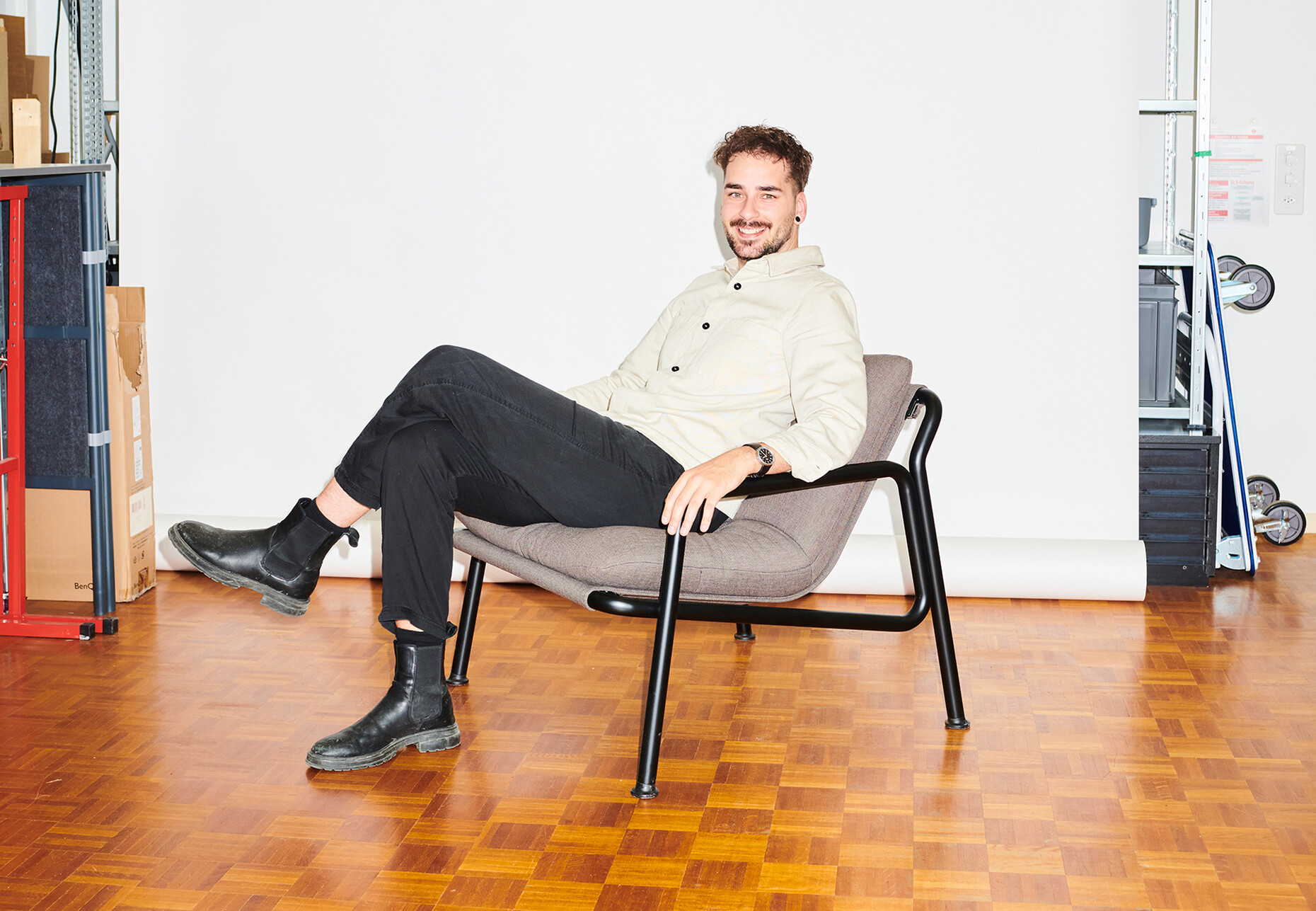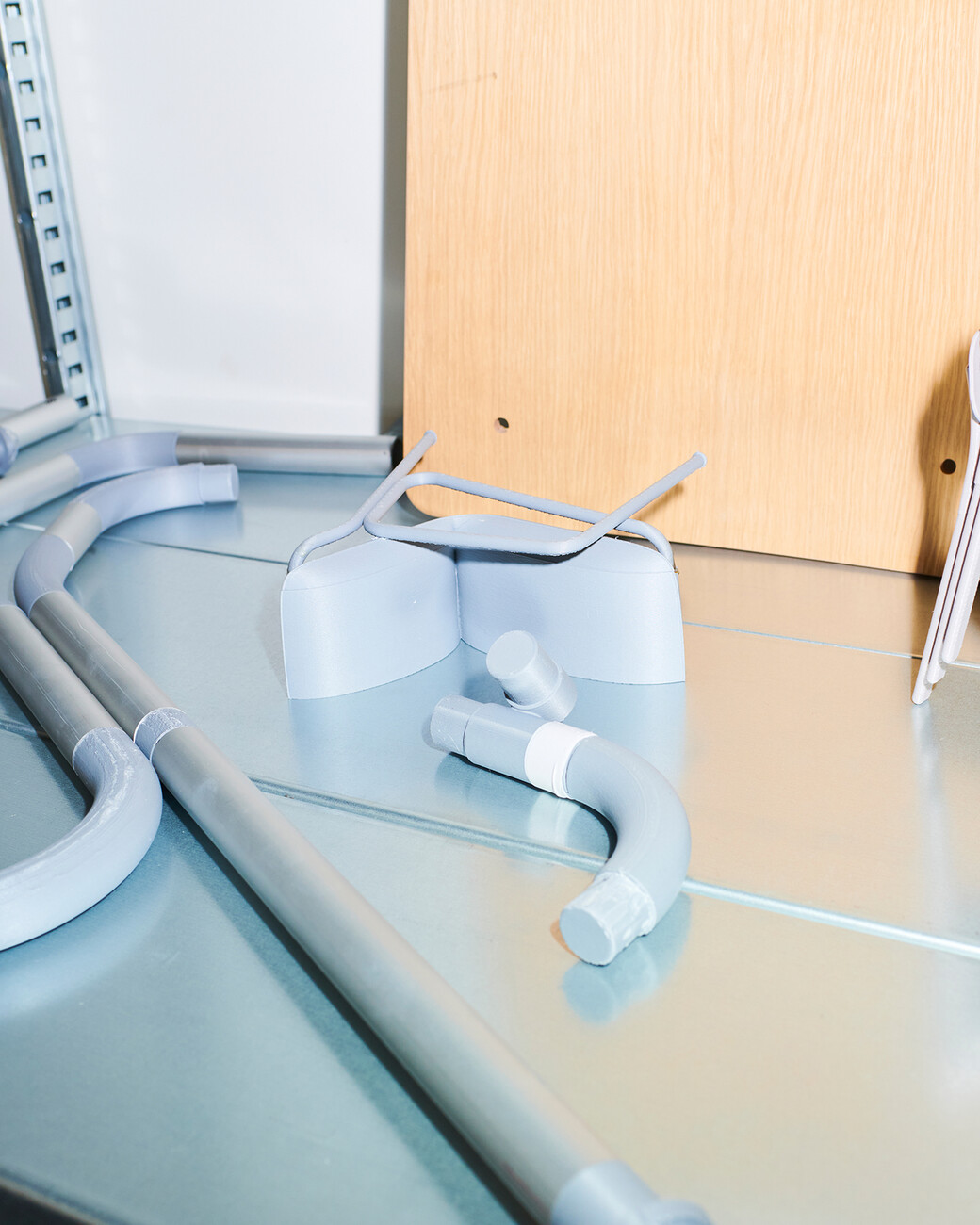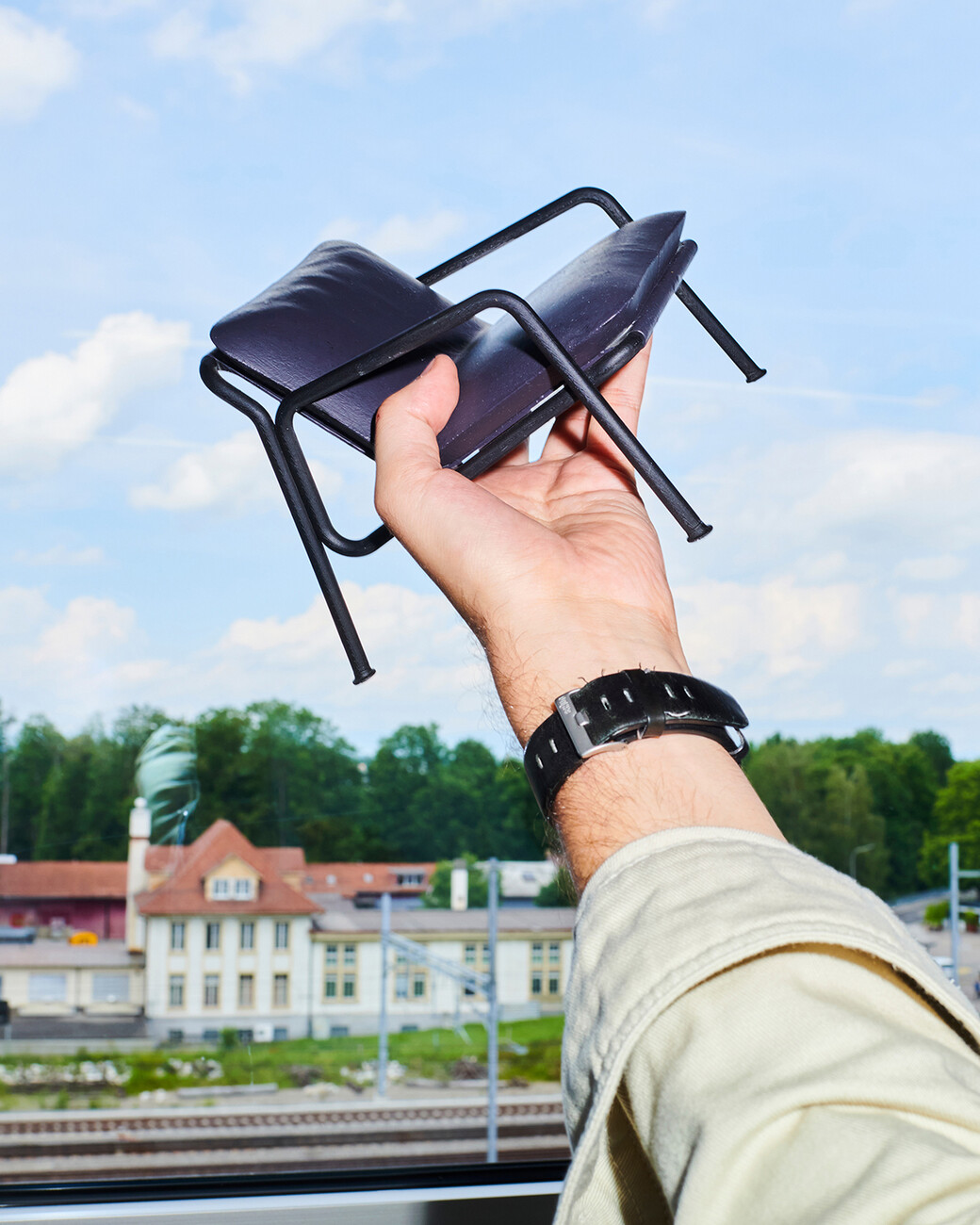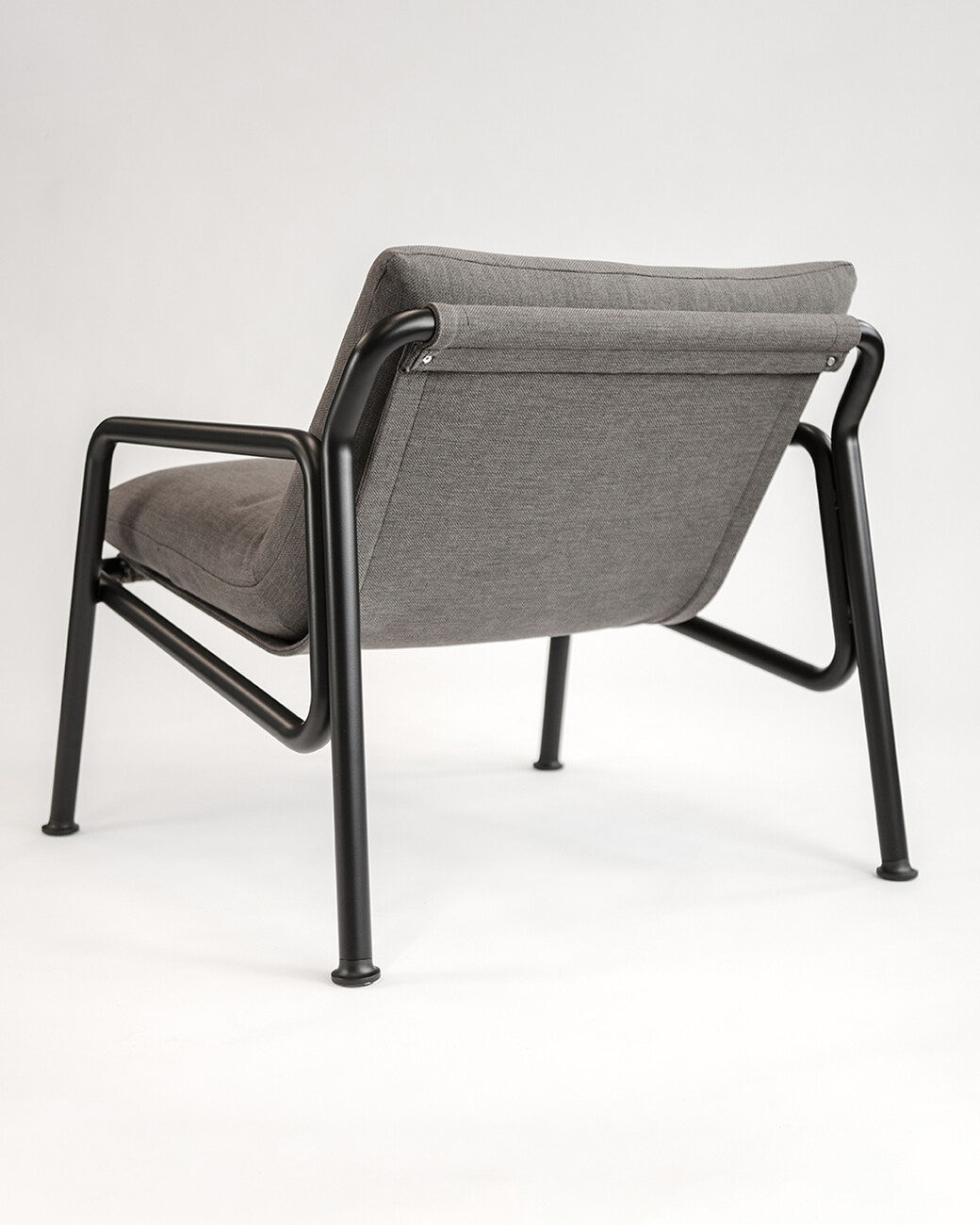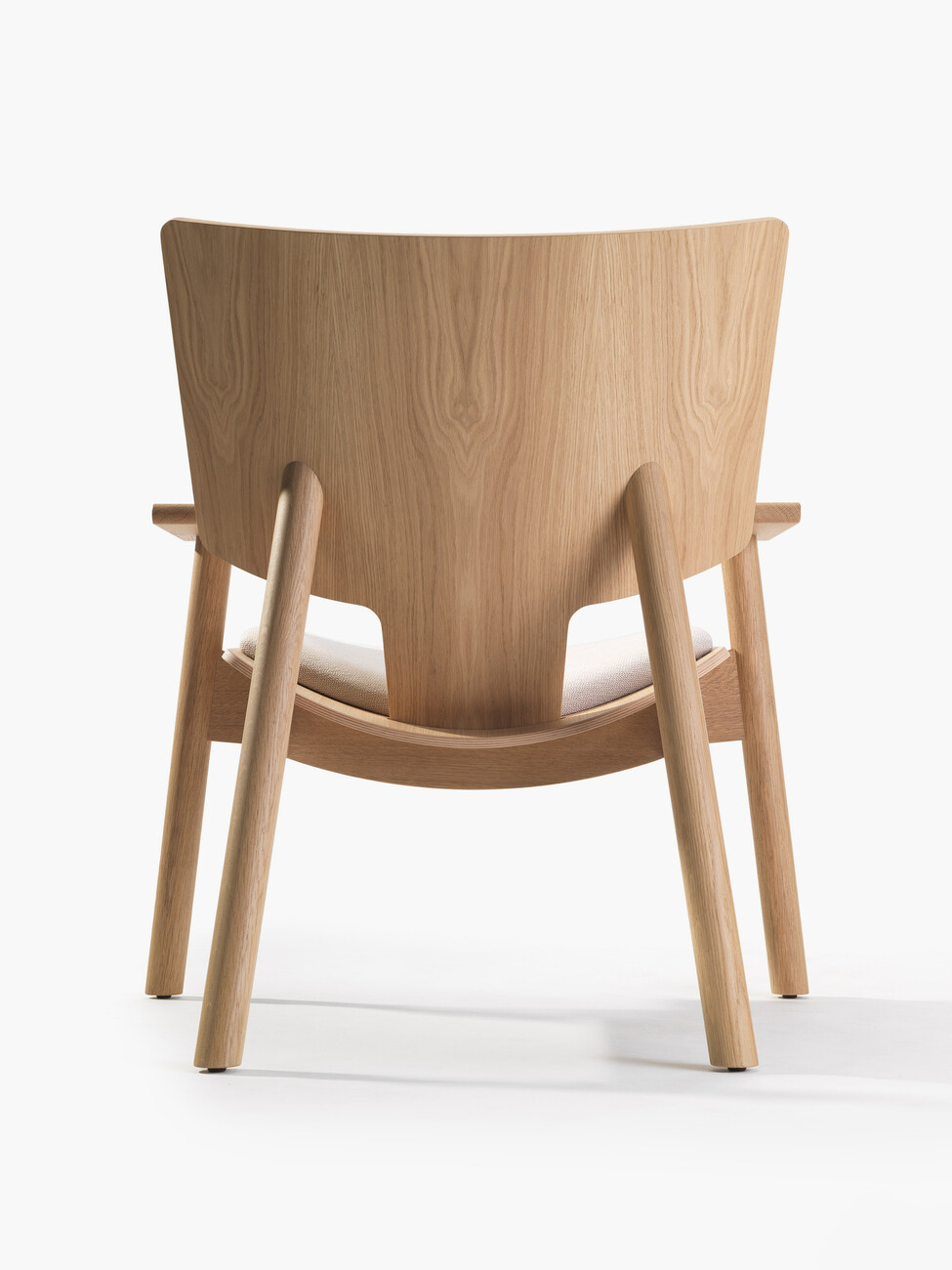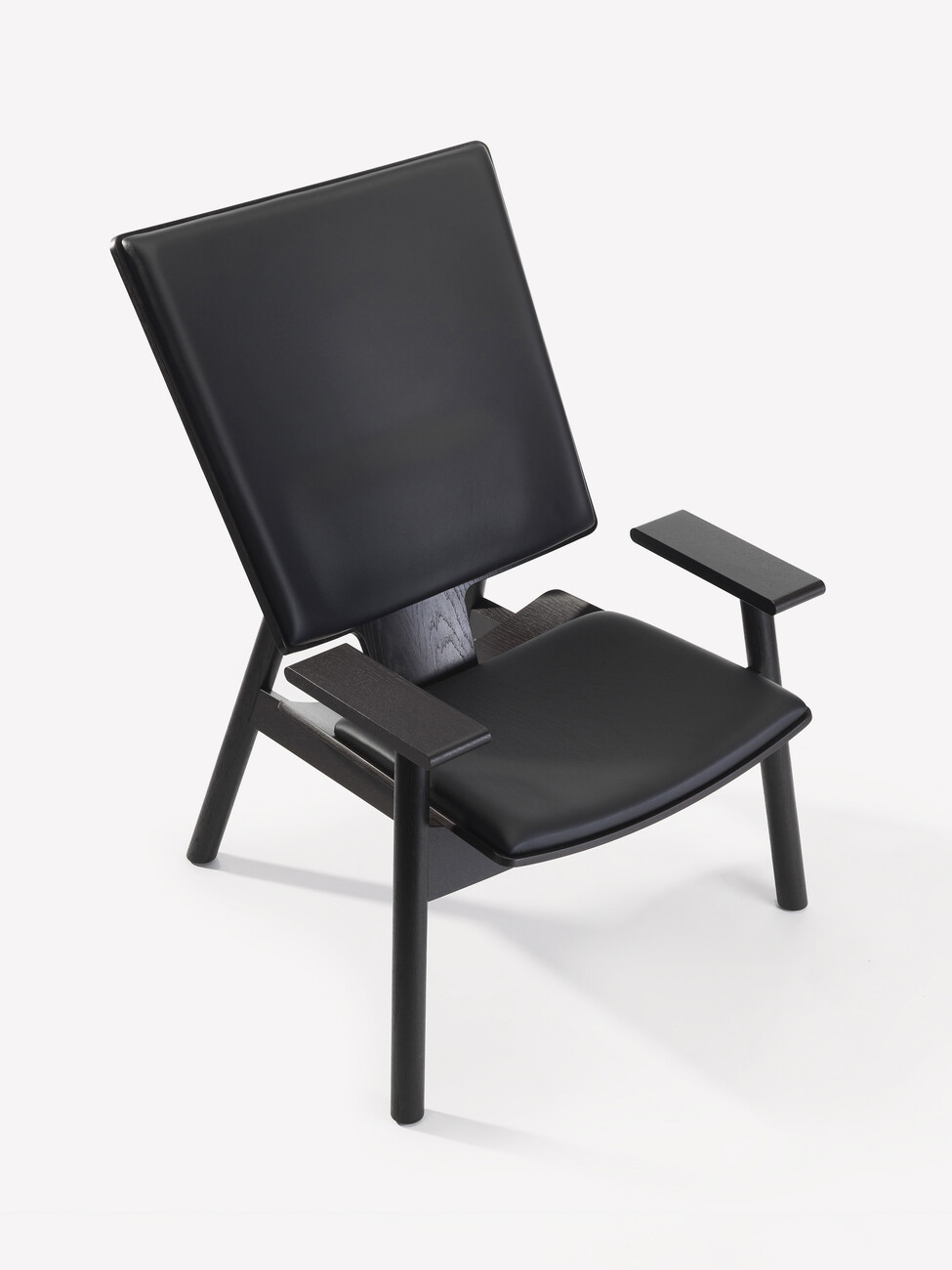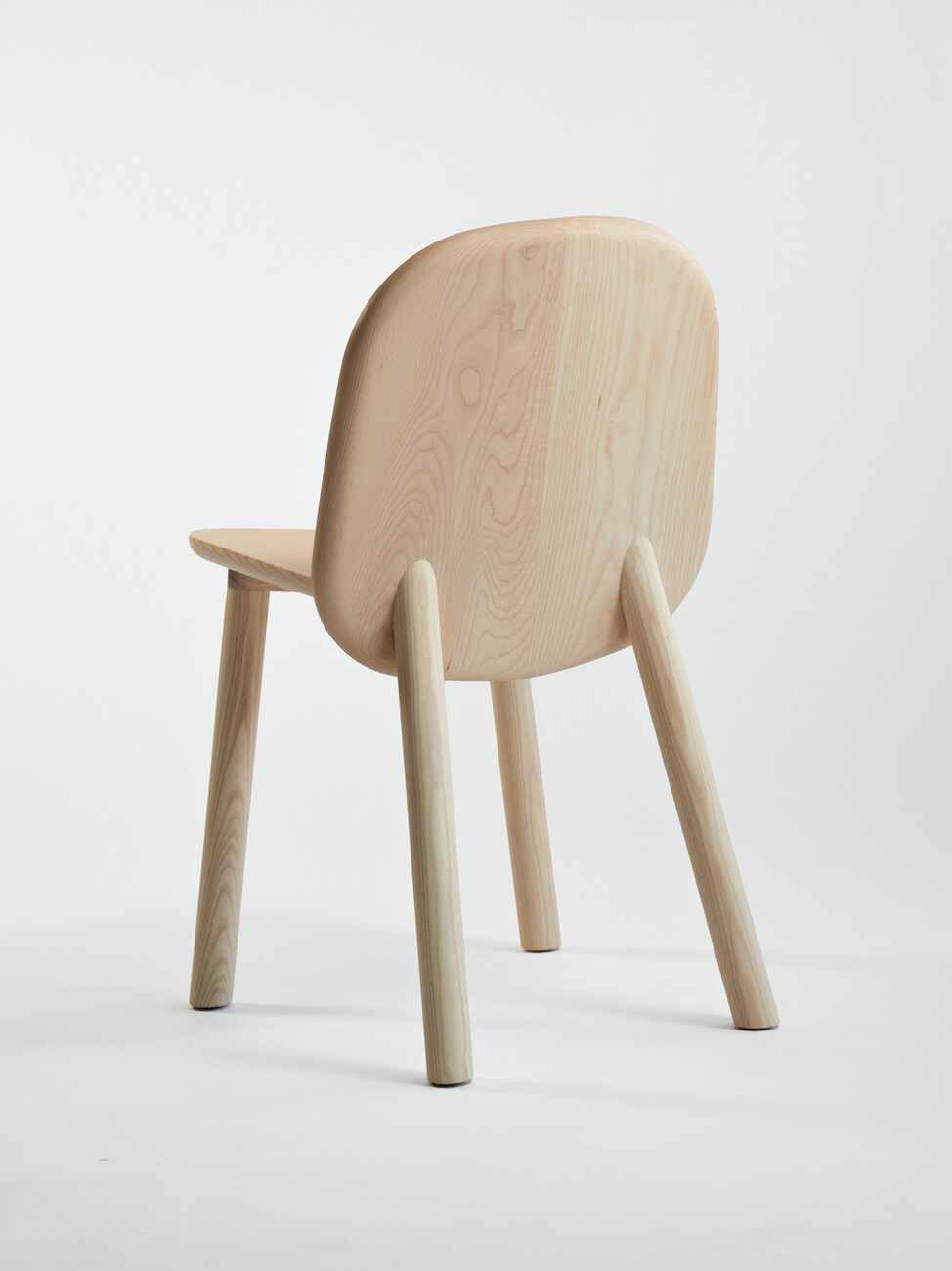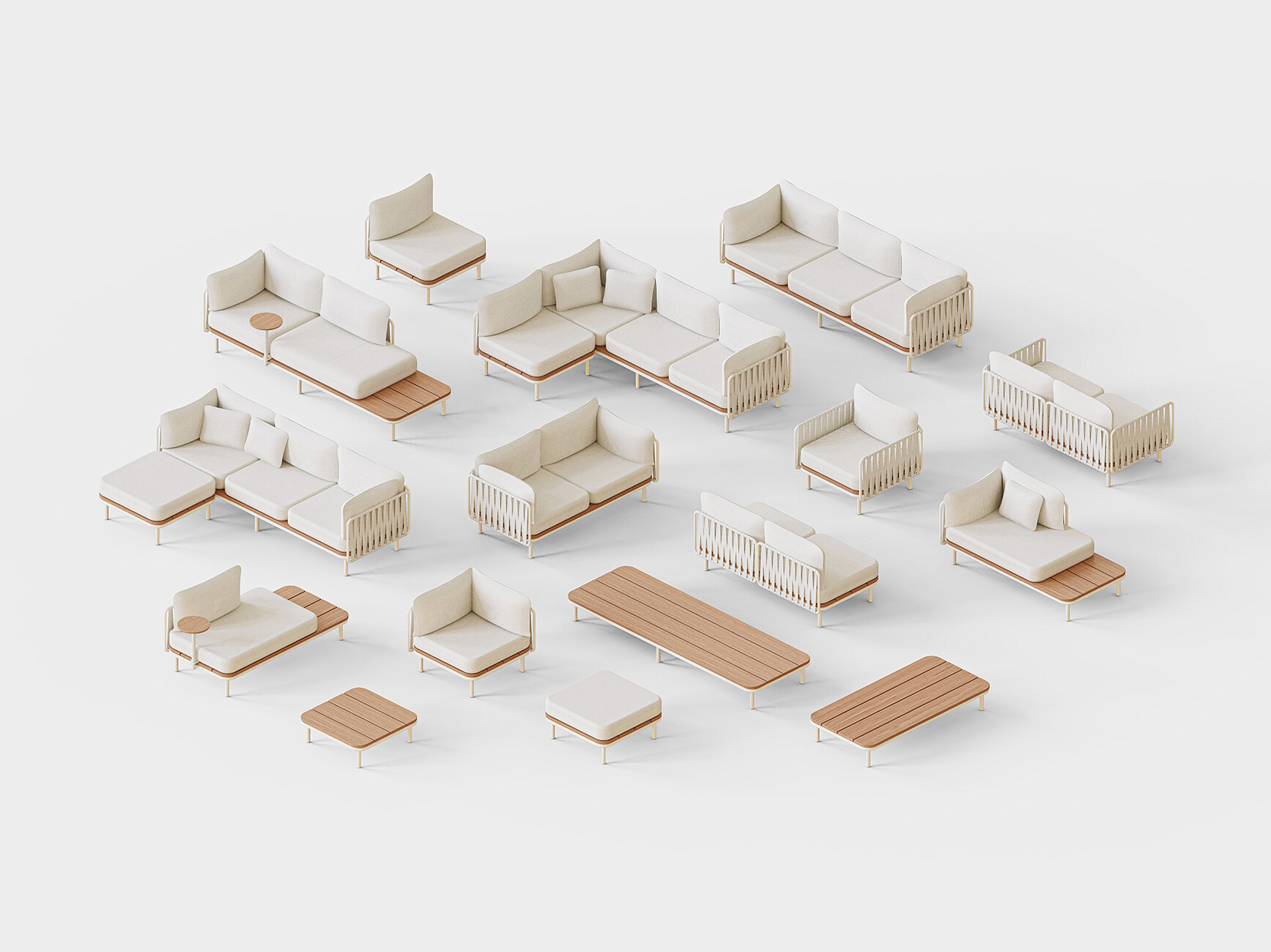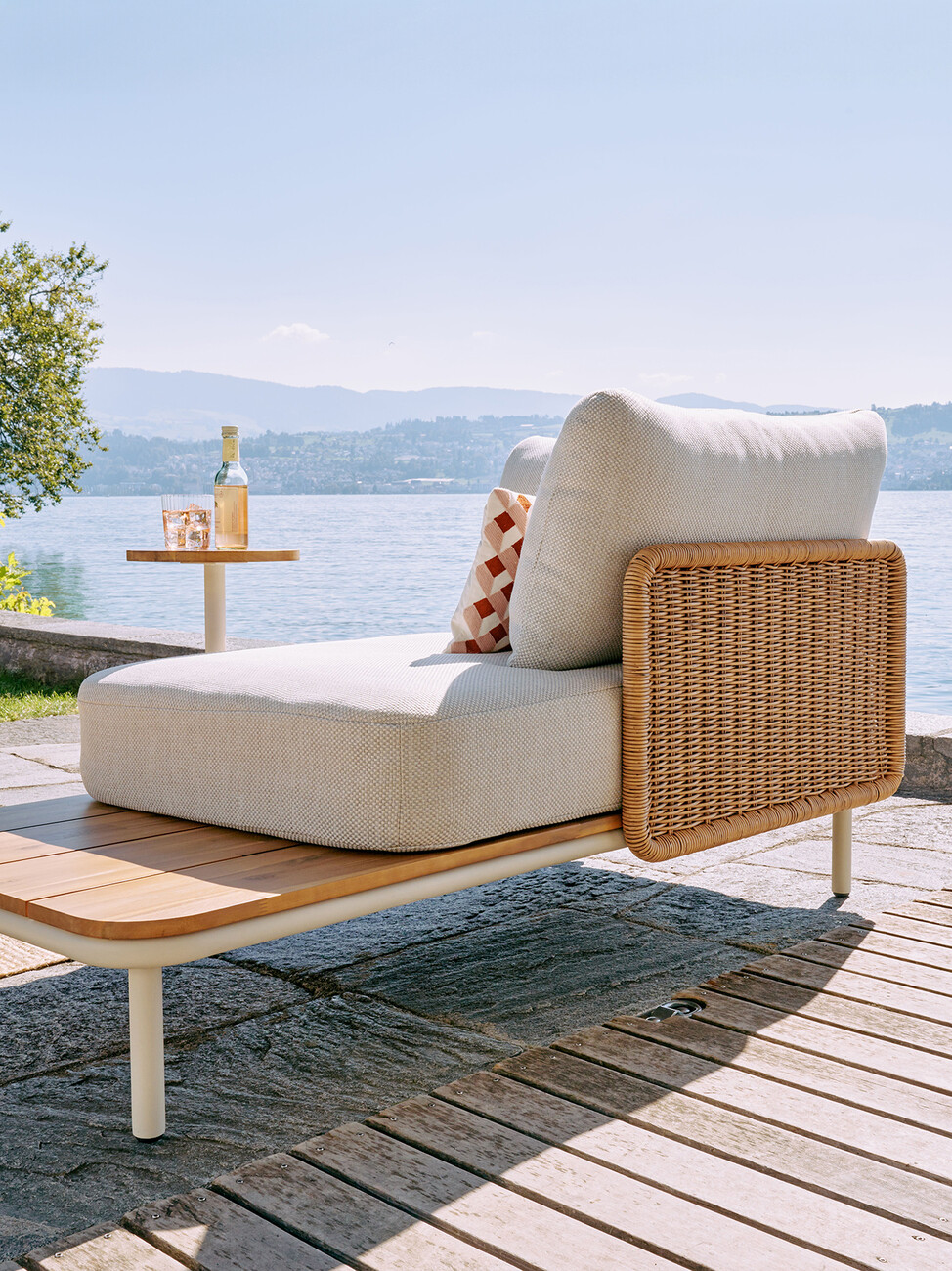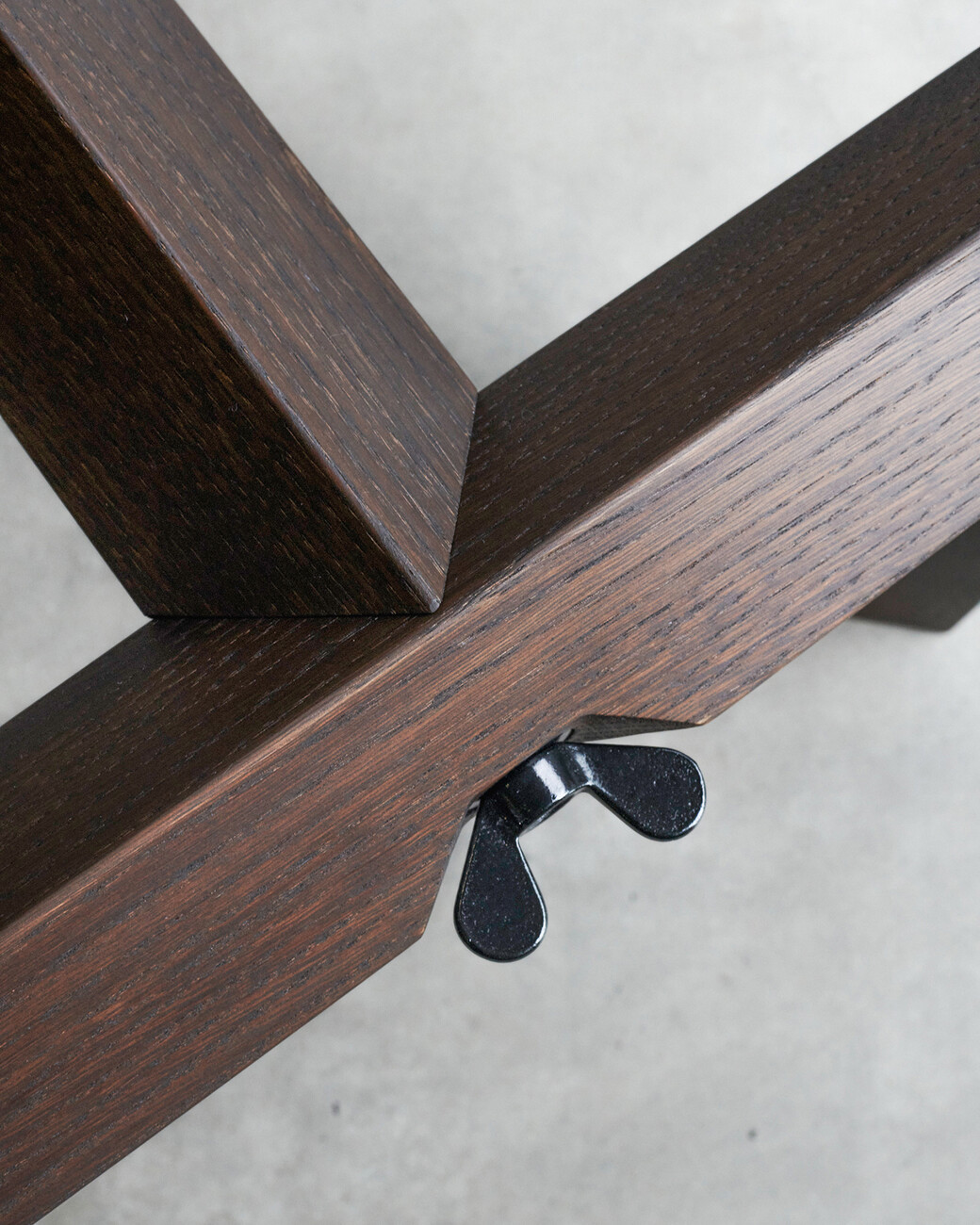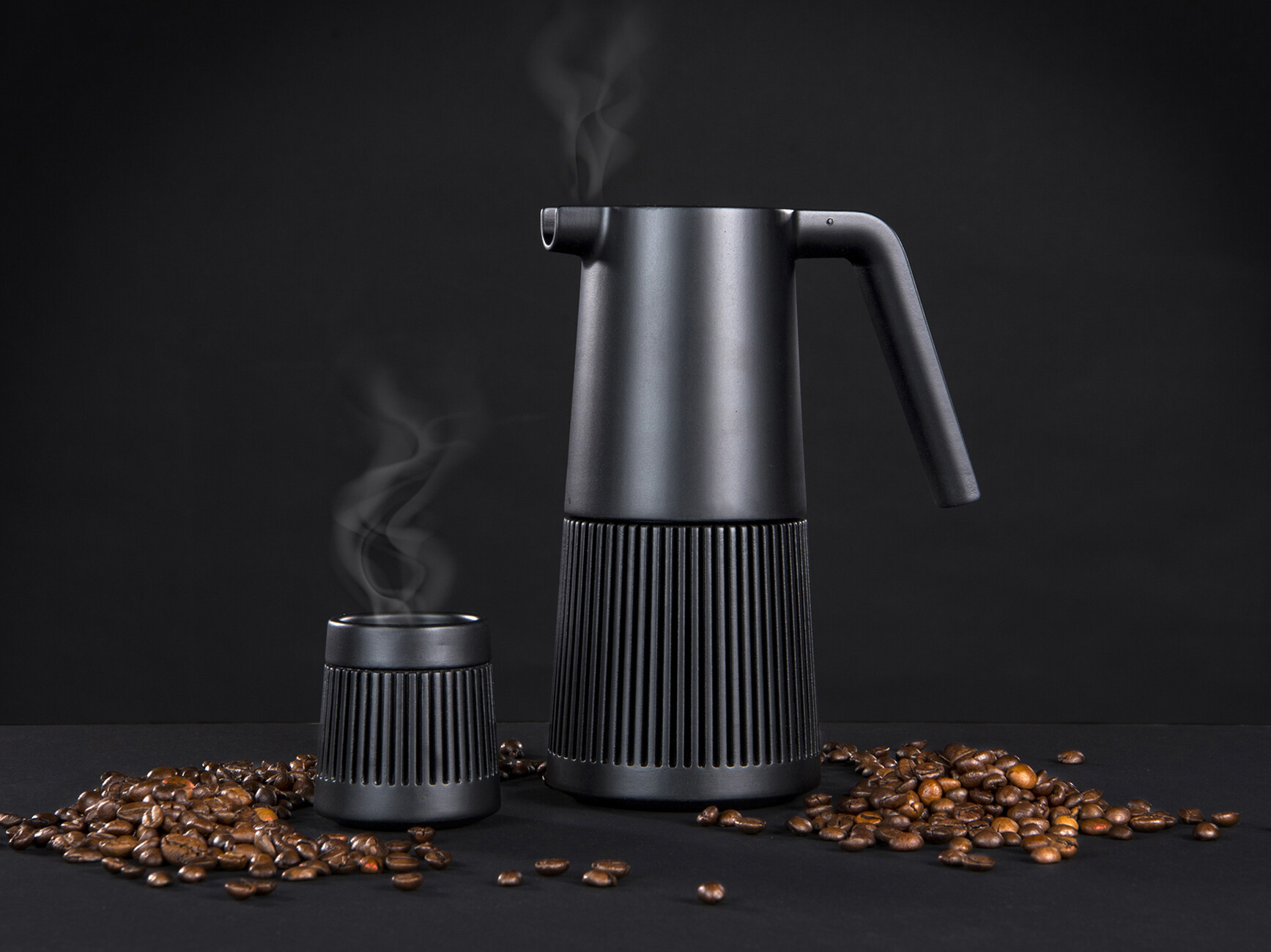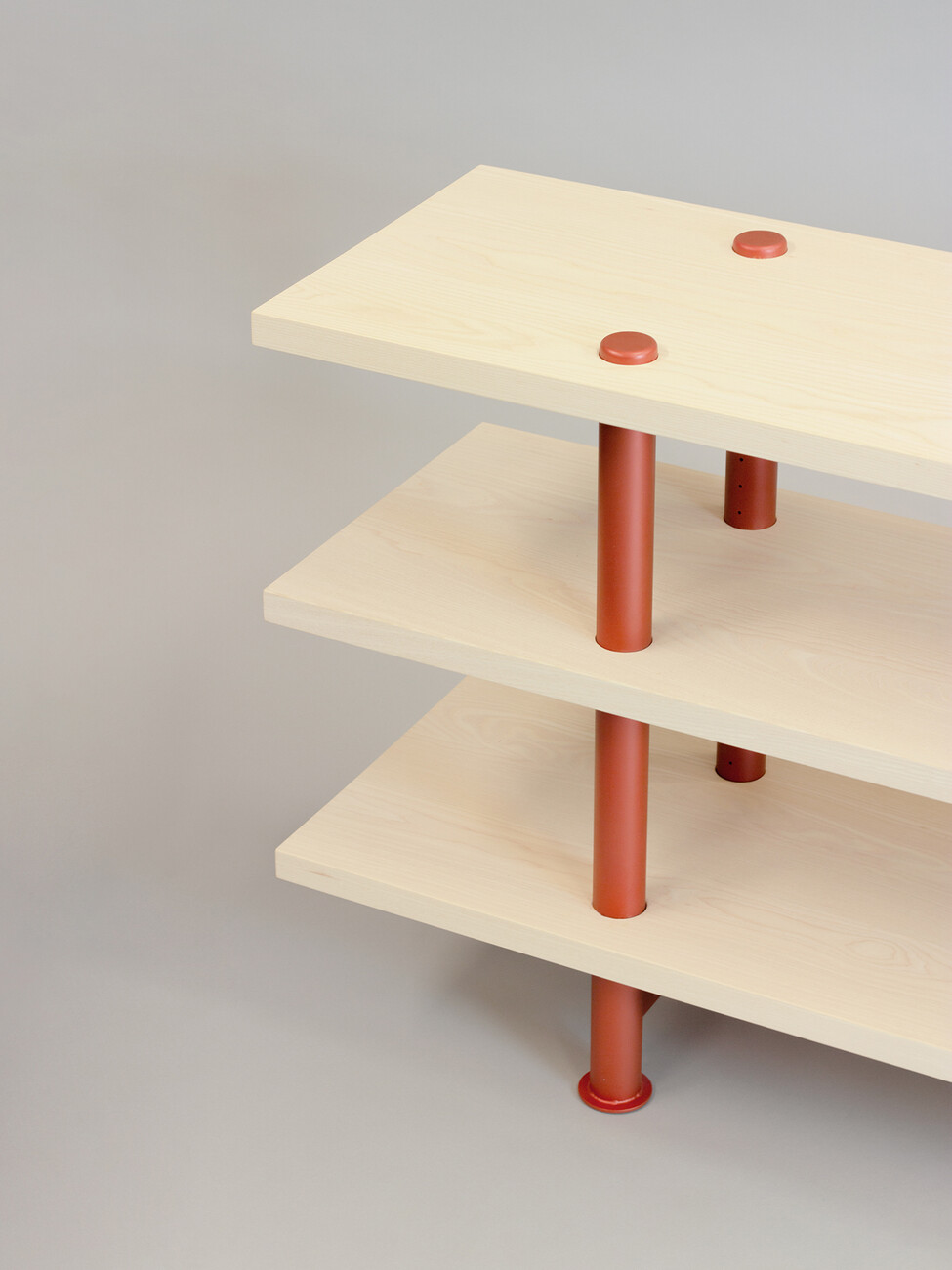YOUNG TALENTS
Designing with Foresight
Anna Moldenhauer: You are a trained engineer and worked in mechanical engineering for several years before studying industrial design – how does your technical background impact your current work in design?
Marc Gerber: It has a huge influence on my work, perhaps even the greatest of all. During my time as a design engineer in the mechanical engineering industry, I also worked as a project manager and was closely involved in the process, from the development and design phase through to the engineering and even implementation with the manufacturers. That meant that even before I studied industrial design, I was closely familiar with the development process for technical products through to readying them for market. When I’m designing a product, I always have the production in mind.
Does that also mean that you only use the materials that are essential to realize your idea?
Marc Gerber: Yes, exactly. The structure of the furniture plays a big role here. I also attach importance to the processes that take place during production, logistics, and sales. The issue of sustainability is something I integrate into every stage of the design process. For me, design also involves thinking about how the individual parts of the furniture can be stored and shipped compactly.
Even where the design is reduced to the essentials, it’s possible to recognize your signature in the underlying structure. What approach do you take to make this visible?
Marc Gerber: I think that for young designers it is important to be able to surprise, to create new things. There are already thousands of chairs and tables on the market. What spurs me on is the excitement of finding a way of creating something new within this abundance of furniture. In addition to the typology of the furniture, this also means breaking new ground with little details, as well as incorporating a touch of humor or a certain wit. With my "Winku" table, use of the wing nut as a connecting element draws attention to a small, standard part that shapes the entire character of the table. Or "Looper", my design for a tubular armchair, where I wanted to play with the contours of the tube. My solution may look classic, but on closer inspection it’s surprising. The lines of the frame seem to be drawn in the air and in fact originally filled several sketchbooks.
I find your projects in wood interesting, too, such as the "Conte" chair that has no visible screws.
Marc Gerber: Even though I’m more into metals, I’ve always been fascinated by wood. I didn’t train as a cabinetmaker, but I’ve gradually acquired some knowledge of wood processing. What’s more, a lot of my fellow students completed training in this area, so I’ve always been surrounded by experts. Wood behaves differently to metal, so the ways it can be worked are not the same, either. That meant it was quite a change, and the prototypes that I commissioned from joineries helped me to learn more about processing the material. As a product designer, I don’t need to be a pro in every trade, but to achieve the ideal structure, it’s important to know what I need to pay attention to in the design – if the solution is to be durable and stable.
Your works are very diverse – from wooden chairs to the outdoor collection to the coffee maker and motorcycle. How do you approach the different themes?
Marc Gerber: It depends on the clients I’m working with. Basically, I’m interested in working in all areas because that gives me a certain variety in my day-to-day work, and I need that for my creativity. From the development of kitchen appliances, for which the components are manufactured using injection molding and where draft angles are therefore important, through to production of wooden furniture, for which you need skilled craftsmanship. These are the different worlds in which I feel at home. I have a passion for design but also for technology, and I try to find the best mix wherever possible. One example is the concept of the height-adjustable table I designed: I wanted to find a new technical way to raise it. This all stemmed from an architect friend, who expressed an interest in an elegant, height-adjustable table that got by without a telescopic cylinder. For me, his remarks provided the starting point for developing a table that would be able to stand apart from the usual image of a desk and thus also have a design quality.
So in other words, your approach is different in each case?
Marc Gerber: All projects start with some research, but a lot depends on the relevant brief I’m working with. Tasks with a lot of freedom are my favorite, of course. The research is essential in order to find a way to develop a product that meets my expectations as well as those of society and customers, while also being sustainable and economically viable. I really appreciate bouncing ideas off my clients and receiving their feedback, which means I learn something every day.
You founded your studio in 2020 in the middle of the Covid pandemic, which was a bold move. What do you think of the current opportunities for young designers?
Marc Gerber: It was quite a gamble to start my own business during this time, and I also completed my final year project at that time, when owing to lockdown we weren’t actually able to use the school workshops to build the prototypes. The idea of working independently arose during my time in Berlin, where I was able to work for Konstantin Grcic before my graduation year. Working with Konstantin was very formative for me and gave me a certain self-confidence. I really enjoyed working with him on all sorts of projects. I worked well under his guidance, and I realized that I wanted to make my own projects a reality, too, after graduation. I was also lucky because I had orders right from the start. You need perseverance and patience, including when it comes to business development and establishing your own a network. I’ve been told that on average it takes around ten years to get a design studio firmly in play. Exchanging ideas with other designers is very important, as is helping each other as a community instead of just seeing the competition. In my view, right now companies are more willing to work with young designers again.
Is there a way of working or a motto that you have retained from your time at Studio Grcic?
Marc Gerber: I really liked the way we reviewed and adapted Konstantin’s ideas and concepts by constantly switching between digital tools and paper model-making. I learnt that it can take a long time before the design is finished, although in other cases it can be surprisingly quick. It’s important that you also review ideas that you initially consider to be too particular. This can give rise to interesting typologies that combine various functions, for example, and thus adapt to a changing society.
What do you aim to change with your design?
Marc Gerber: Good question. I’m currently working with a company on an office system, for example, that consists of very few parts and is modular and flexible. I get excited about turning things on their head and rethinking them, designing them to be simpler, adapted to today’s world. One example is the "Nihoa" outdoor collection for Micasa, for which you can purchase the individual parts of the lounge separately as well, instead of just the furniture as a whole. The platforms that serve as a base can also be used as tables. Customers can remove the side sections and expand or modify the system as required. Considering the future of a product plays an important role in my projects. But it’s also important to simplify production processes and rely on local production as much as possible.
What are you working on right now?
Marc Gerber: I’m currently working on several projects in parallel, both in cooperation with companies and independently. Those I initiated myself include a series of chairs made of solid wood as well as the development of a luminaire that can be stored and shipped compactly, but which has a very large volume when unfolded. A lot of the projects I work on revolve around the office and how you can develop new ideas for it. I’m currently building the prototypes for a tubular chair that I’m developing in collaboration with a German company. It may be on show in Milan in April 2025.
